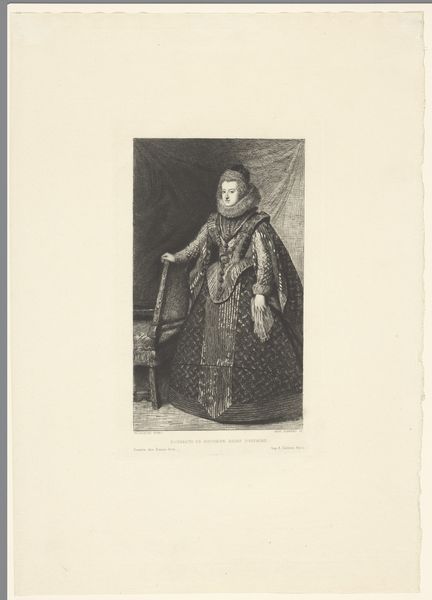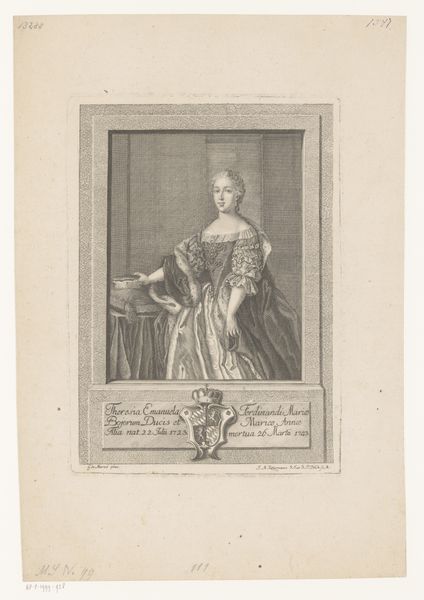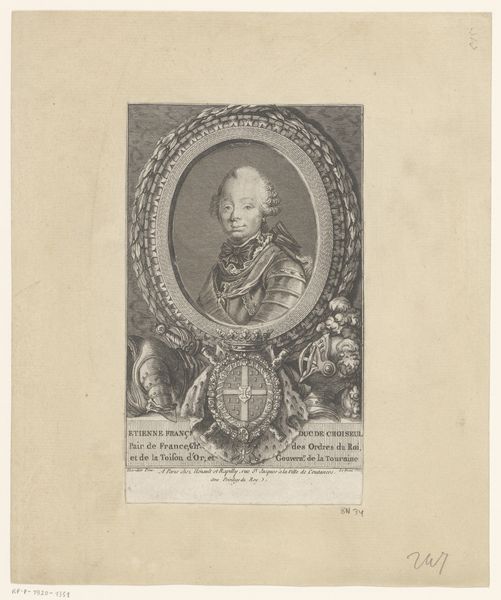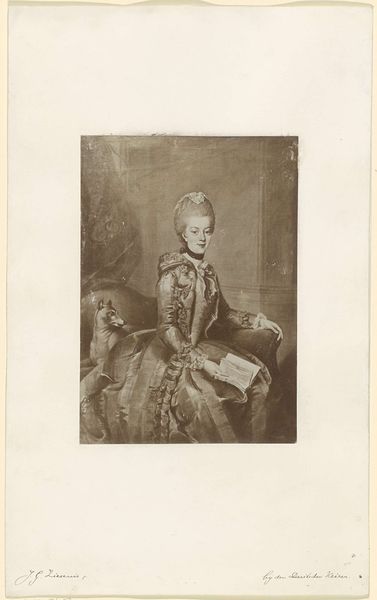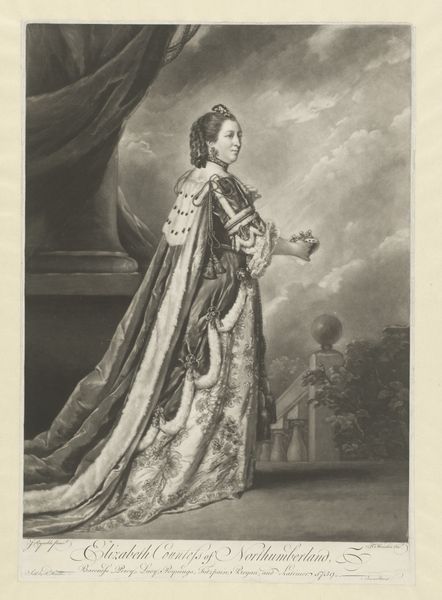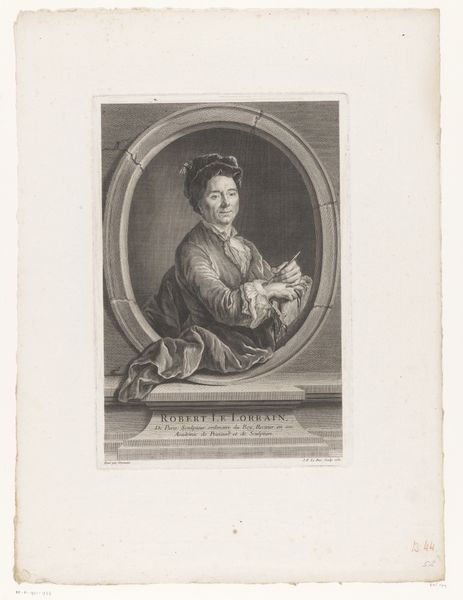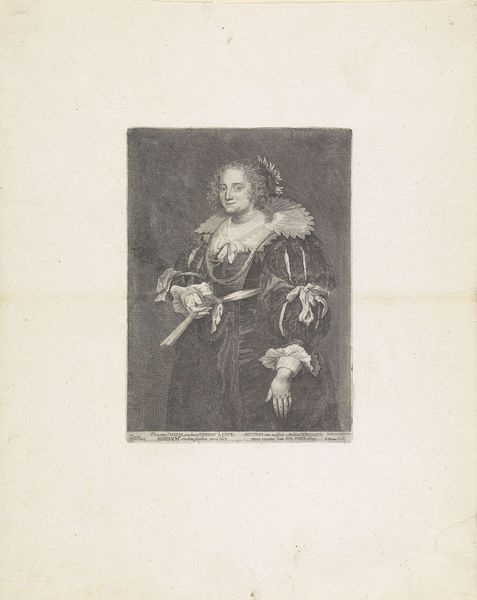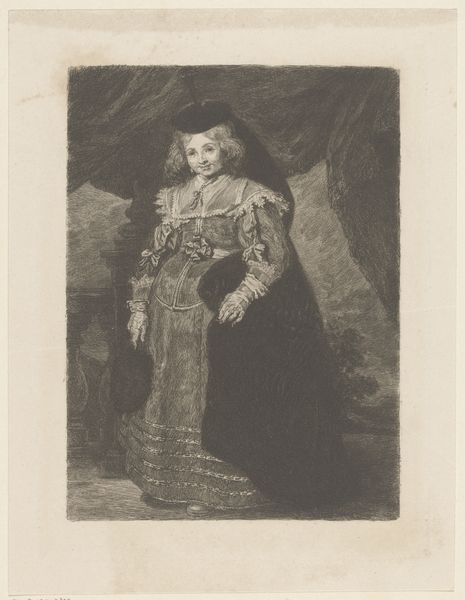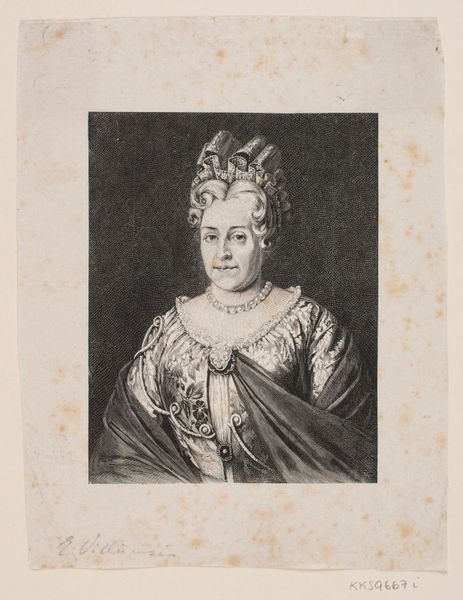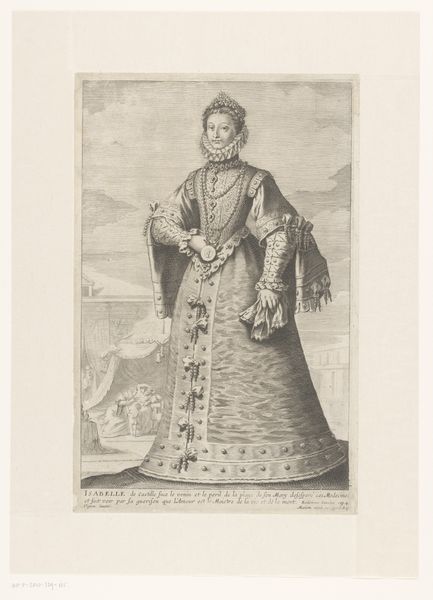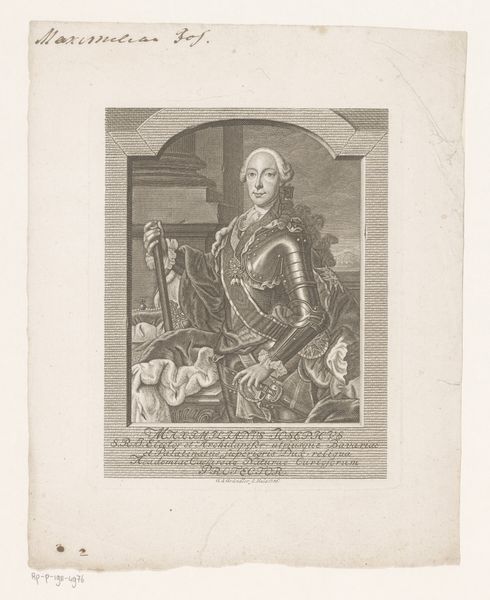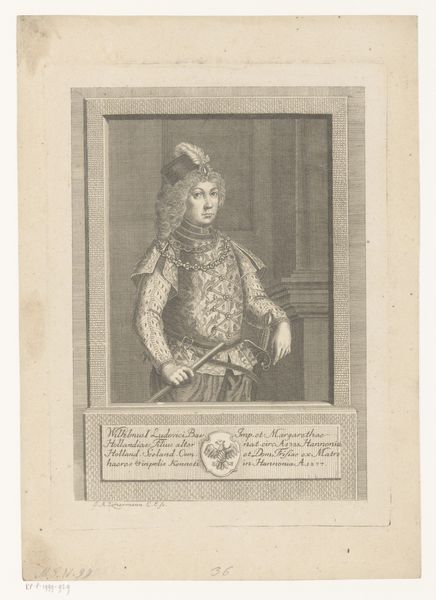
print, intaglio, engraving
#
portrait
#
medieval
# print
#
intaglio
#
figuration
#
history-painting
#
engraving
Dimensions: height 134 mm, width 194 mm
Copyright: Rijks Museum: Open Domain
Editor: We’re looking at “Gezicht op een zanderij bij Ukkel,” or “View of a Sand Pit near Ukkel,” an 1897 intaglio print by Pol Craps. It strikes me as incredibly formal, almost stoic. What do you see in this piece beyond just a historical portrait? Curator: What I see is a commentary on power, gender, and the gaze itself. This engraving presents a woman, likely of high social standing given her attire, but it’s doing so within a very specific historical and societal framework. Think about the era. What does it mean to portray a woman like this at the cusp of the 20th century? Is it a celebration, a critique, or something more ambiguous? Editor: That's a good point. The subject is certainly presented in a controlled, almost posed manner. How does that relate to power dynamics? Curator: Well, consider who controlled the means of representation. Men were largely the artists, and therefore held the power to define and depict women according to societal expectations. The sitter’s clothing and accessories—the high collar, the layered garments— speak to a specific construct of femininity. Is it restrictive? Liberating? That’s part of the dialogue. The act of portraiture was historically tied to status, wealth, and who gets to be remembered. Whose stories are valued and why? Editor: So you're suggesting that even seemingly straightforward portraits are actually embedded with complex messages about identity and social structures? Curator: Precisely! And this engraving, being a reproduction, layers another level. How does the act of reproducing and distributing images influence how these messages spread and who has access to them? Who gets to see it? Who owns it? Those are important questions that still resonate today. Editor: This makes me see the artwork beyond its surface appeal, and more as a cultural artifact with its own story to tell. Curator: Absolutely. Art provides a window into understanding not only the past but also the ongoing power dynamics that shape our present. It challenges us to question what we see and how we interpret it.
Comments
No comments
Be the first to comment and join the conversation on the ultimate creative platform.
